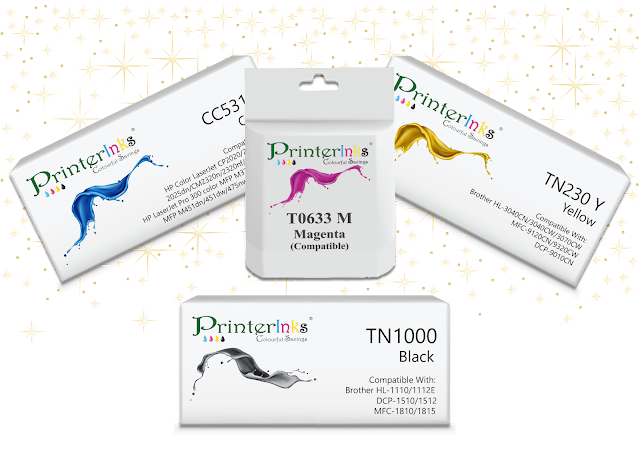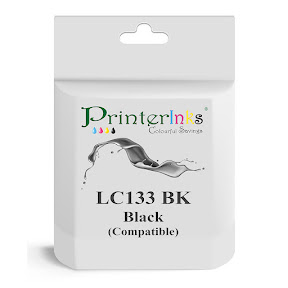How to find the best Printer toner:
Printer toner is a crucial component in laser printers and photocopiers, responsible for creating the image and transferring it onto paper. Toner consists of a fine powder composed of various particles and compounds, designed to produce high-quality prints with sharp text and vibrant graphics. In this article, we will explore the composition, function, manufacturing process, and environmental considerations of printer toner.
Composition of Printer Toner: Printer toner is primarily composed of a polymer resin, which acts as a binder, holding the other components together. The resin is responsible for ensuring that the toner adheres to the paper during the printing process. Additionally, toner contains pigments, typically carbon black, which provide the color for black prints. For color printing, toner may include additional pigments such as cyan, magenta, and yellow.
In addition to the resin and pigments, toner formulations often include various additives to enhance performance. These additives can include charge control agents, which help regulate the electrical charge of the toner particles, ensuring proper transfer to the paper. Other additives may improve fusing properties, reducing the energy required to bond the toner to the paper.
Function of Printer Toner: The function of printer toner is to create an image on paper by transferring the toner particles onto the page. Laser printers and photocopiers use a process called electrophotography, also known as xerography, to achieve this. The basic steps involved in the electrophotographic process are:
- Charging: A corona wire or roller charges a photoconductive drum or belt with a uniform negative charge.
- Exposing: A laser or LED beam selectively discharges areas on the drum or belt corresponding to the image to be printed.
- Developing: Toner particles, carrying an opposite charge to the discharged areas, are attracted to the drum or belt, forming a toner image.
- Transferring: The toner image is transferred from the drum or belt onto the paper using a transfer corona.
- Fusing: The toner is fused to the paper using heat and pressure, creating a permanent image.
Manufacturing Process of Printer Toner: The manufacturing process of printer toner involves several steps, including mixing, melting, grinding, and blending. Here is a simplified overview of the process:
- Raw Materials: The raw materials, including the polymer resin, pigments, and additives, are gathered and prepared for the manufacturing process.
- Mixing: The resin, pigments, and additives are mixed together in precise proportions. This mixture forms a premix, which is then fed into the next step.
- Melting: The premix is melted in a specialized mixer or extruder, creating a molten mass of toner. This process allows the components to blend thoroughly.
- Cooling: The molten toner is rapidly cooled, forming solid particles. These particles are then ground into a fine powder using mechanical grinding methods.
- Blending: The ground toner particles are carefully blended to achieve the desired particle size distribution, electrostatic properties, and color characteristics. This step ensures consistent print quality and performance.
- Testing: The finished toner undergoes rigorous quality control testing to ensure it meets the required specifications. This includes evaluating factors such as particle size, charge characteristics, and print density.
Environmental Considerations: Printer toner manufacturing and disposal have potential environmental impacts. The selection of raw materials, production processes, and waste management practices can all contribute to the overall environmental footprint. Here are some considerations for minimizing the environmental impact of printer toner:
- Raw Material Selection: Opting for sustainably sourced raw materials, such as recycled polymers or bio-based alternatives, can help reduce the environmental impact associated with toner production.
- Energy Efficiency: Implementing energy-efficient manufacturing processes and equipment can reduce energy consumption and associated greenhouse gas emissions.
- Waste Reduction: Minimizing waste generation through efficient manufacturing practices, recycling, and reusing toner cartridges can help reduce the environmental impact. Additionally, proper disposal methods for unused toner and spent cartridges should be promoted to prevent pollution.
- Life Cycle Assessment: Conducting life cycle assessments of printer toner, from raw material extraction to disposal, can provide insights into the environmental hotspots and guide improvements in the manufacturing and waste management processes.
- End-of-Life Management: Promoting toner cartridge recycling programs and providing convenient collection points for used cartridges can help reduce the volume of toner-related waste entering landfills.
Conclusion: Printer toner plays a vital role in producing high-quality prints in laser printers and photocopiers. Its composition, which includes polymer resin, pigments, and additives, enables the creation of sharp text and vibrant images. The manufacturing process involves mixing, melting, grinding, and blending, followed by stringent quality control testing. Considering the environmental impact, using sustainable raw materials, improving energy efficiency, reducing waste, and implementing proper end-of-life management practices are essential. By adopting environmentally conscious approaches, the printer toner industry can contribute to a more sustainable future while meeting the printing needs of businesses and individuals. To find the best Printer toner visit us @ Printerinks Limited



Comments
Post a Comment